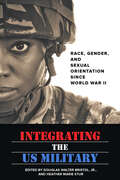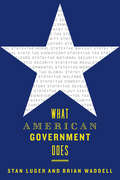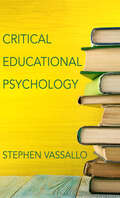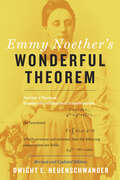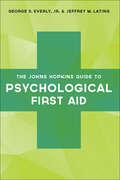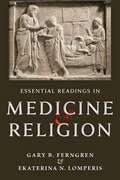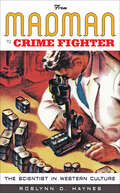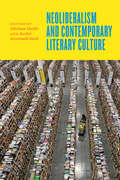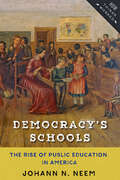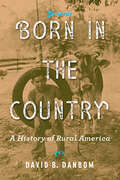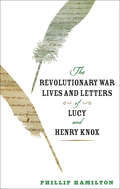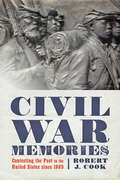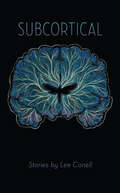- Table View
- List View
Integrating the US Military: Race, Gender, and Sexual Orientation since World War II
by Douglas W. Bristol Jr. Heather Marie SturOne of the great ironies of American history since World War II is that the military;¢;‚¬;€?typically a conservative institution;¢;‚¬;€?has often been at the forefront of civil rights. In the 1940s, the 1970s, and the early 2000s, military integration and promotion policies were in many ways more progressive than similar efforts in the civilian world. Today, the military is one of the best ways for people from marginalized groups to succeed based solely on job performance.Integrating the US Military traces the experiences of African Americans, Japanese Americans, women, and gay men and lesbians in the armed forces since World War II. By examining controversies from racial integration to the dismantling of "Don;€™t Ask, Don;€™t Tell" to the recent repeal of the ban on women in combat, these essays show that the military is an important institution in which social change is confirmed and, occasionally, accelerated. Remarkably, the challenges launched against the racial, gender, and sexual status quo in the postwar years have also broadly transformed overarching ideas about power, citizenship, and America;€™s role in the world.The first comparative study of legally marginalized groups within the armed services, Integrating the US Military is a unique look at the history of military integration in theory and in practice. The book underscores the complicated struggle that accompanied integration and sheds new light on a broad range of comparable issues that affect civilian society, including affirmative action, marriage laws, and sexual harassment.
What American Government Does
by Stan Luger Brian WaddellIt has become all too easy to disparage the role of the US government today. Many Americans are influenced by a simplistic anti-government ideology that is itself driven by a desire to roll back the more democratically responsive aspects of public policy. But government has improved the lives of Americans in numerous ways, from providing income, food, education, housing, and healthcare support, to ensuring cleaner air, water, and food, to providing a vast infrastructure upon which economic growth depends. In What American Government Does, Stan Luger and Brian Waddell offer a practical understanding of the scope and function of American governance. They present a historical overview of the development of US governance that is rooted in the theoretical work of Charles Tilly, Karl Polanyi, and Michael Mann. Touching on everything from taxes, welfare, and national and domestic security to the government’s regulatory, developmental, and global responsibilities, each chapter covers a main function of American government and explains how it emerged and then evolved over time. Luger and Waddell are careful to both identify the controversies related to what government does and those areas of government that should elicit concern and vigilance. Analyzing the functions of the US government in terms of both a tug-of-war and a collaboration between state and societal forces, they provide a reading of American political development that dispels the myth of a weak, minimal, non-interventionist state.What American Government Does represents a major contribution to the scholarly debate on the nature of the American state and the exercise of power in America.
What American Government Does
by Stan Luger Brian WaddellIt has become all too easy to disparage the role of the US government today. Many Americans are influenced by a simplistic anti-government ideology that is itself driven by a desire to roll back the more democratically responsive aspects of public policy. But government has improved the lives of Americans in numerous ways, from providing income, food, education, housing, and healthcare support, to ensuring cleaner air, water, and food, to providing a vast infrastructure upon which economic growth depends. In What American Government Does, Stan Luger and Brian Waddell offer a practical understanding of the scope and function of American governance. They present a historical overview of the development of US governance that is rooted in the theoretical work of Charles Tilly, Karl Polanyi, and Michael Mann. Touching on everything from taxes, welfare, and national and domestic security to the government’s regulatory, developmental, and global responsibilities, each chapter covers a main function of American government and explains how it emerged and then evolved over time. Luger and Waddell are careful to both identify the controversies related to what government does and those areas of government that should elicit concern and vigilance. Analyzing the functions of the US government in terms of both a tug-of-war and a collaboration between state and societal forces, they provide a reading of American political development that dispels the myth of a weak, minimal, non-interventionist state.What American Government Does represents a major contribution to the scholarly debate on the nature of the American state and the exercise of power in America.
Critical Educational Psychology: An Examination Of Foundational Features Of The Field (Educational Psychology Ser. #15)
by Stephen VassalloThe field of critical studies recognizes that all knowledge is deeply embedded in ideological, cultural, political, and historical contexts. Although this approach is commonly applied in other subfields of psychology, educational psychology;¢;‚¬;€?which is the study of human learning, thinking, and behavior in formal and informal educational contexts;¢;‚¬;€?has resisted a comprehensive critical appraisal. In Critical Educational Psychology, Stephen Vassallo seeks to correct this deficit by demonstrating how the psychology of learning is neither neutral nor value-free but rather bound by a host of contextual issues and assumptions. Vassallo invites teachers and teacher educators, educational researchers, and educational psychologists to think broadly about the implications that their use of psychology has on the teaching and learning process. He applies a wide variety of interdisciplinary approaches to examine the psychology of learning, cognitive development, motivation, creativity, discipline, and attention. Drawing on multiple perspectives within psychology and critical theory, he reveals that contemporary educational psychology is entangled in and underpinned by specific political, ideological, historical, and cultural contexts.A valuable resource for anyone who relies on psychology to interact with, assess, and deliberate over others, especially school-aged children, Critical Educational Psychology resists neatly packaged theories, models, and perspectives that are intended to bring some basis and certainty to pedagogical decision-making. This book will enhance teachers;€™ ethical decision-making and start important new conversations about power and opportunity.
Critical Educational Psychology
by Stephen VassalloThe field of critical studies recognizes that all knowledge is deeply embedded in ideological, cultural, political, and historical contexts. Although this approach is commonly applied in other subfields of psychology, educational psychology;¢;‚¬;€?which is the study of human learning, thinking, and behavior in formal and informal educational contexts;¢;‚¬;€?has resisted a comprehensive critical appraisal. In Critical Educational Psychology, Stephen Vassallo seeks to correct this deficit by demonstrating how the psychology of learning is neither neutral nor value-free but rather bound by a host of contextual issues and assumptions. Vassallo invites teachers and teacher educators, educational researchers, and educational psychologists to think broadly about the implications that their use of psychology has on the teaching and learning process. He applies a wide variety of interdisciplinary approaches to examine the psychology of learning, cognitive development, motivation, creativity, discipline, and attention. Drawing on multiple perspectives within psychology and critical theory, he reveals that contemporary educational psychology is entangled in and underpinned by specific political, ideological, historical, and cultural contexts.A valuable resource for anyone who relies on psychology to interact with, assess, and deliberate over others, especially school-aged children, Critical Educational Psychology resists neatly packaged theories, models, and perspectives that are intended to bring some basis and certainty to pedagogical decision-making. This book will enhance teachers;€™ ethical decision-making and start important new conversations about power and opportunity.
Emmy Noether's Wonderful Theorem
by Dwight E. Neuenschwander"In the judgment of the most competent living mathematicians, Fräulein Noether was the most significant creative mathematical genius thus far produced since the higher education of women began."â€�Albert EinsteinThe year was 1915, and the young mathematician Emmy Noether had just settled into Göttingen University when Albert Einstein visited to lecture on his nearly finished general theory of relativity. Two leading mathematicians of the day, David Hilbert and Felix Klein, dug into the new theory with gusto, but had difficulty reconciling it with what was known about the conservation of energy. Knowing of her expertise in invariance theory, they requested Noether’s help. To solve the problem, she developed a novel theorem, applicable across all of physics, which relates conservation laws to continuous symmetriesâ€�one of the most important pieces of mathematical reasoning ever developed.Noether’s "first" and "second" theorem was published in 1918. The first theorem relates symmetries under global spacetime transformations to the conservation of energy and momentum, and symmetry under global gauge transformations to charge conservation. In continuum mechanics and field theories, these conservation laws are expressed as equations of continuity. The second theorem, an extension of the first, allows transformations with local gauge invariance, and the equations of continuity acquire the covariant derivative characteristic of coupled matter-field systems. General relativity, it turns out, exhibits local gauge invariance. Noether’s theorem also laid the foundation for later generations to apply local gauge invariance to theories of elementary particle interactions. In Dwight E. Neuenschwander’s new edition of Emmy Noether’s Wonderful Theorem, readers will encounter an updated explanation of Noether’s "first" theorem. The discussion of local gauge invariance has been expanded into a detailed presentation of the motivation, proof, and applications of the "second" theorem, including Noether’s resolution of concerns about general relativity. Other refinements in the new edition include an enlarged biography of Emmy Noether’s life and work, parallels drawn between the present approach and Noether’s original 1918 paper, and a summary of the logic behind Noether’s theorem.
Emmy Noether's Wonderful Theorem
by Dwight E. Neuenschwander"In the judgment of the most competent living mathematicians, Fräulein Noether was the most significant creative mathematical genius thus far produced since the higher education of women began."â€�Albert EinsteinThe year was 1915, and the young mathematician Emmy Noether had just settled into Göttingen University when Albert Einstein visited to lecture on his nearly finished general theory of relativity. Two leading mathematicians of the day, David Hilbert and Felix Klein, dug into the new theory with gusto, but had difficulty reconciling it with what was known about the conservation of energy. Knowing of her expertise in invariance theory, they requested Noether’s help. To solve the problem, she developed a novel theorem, applicable across all of physics, which relates conservation laws to continuous symmetriesâ€�one of the most important pieces of mathematical reasoning ever developed.Noether’s "first" and "second" theorem was published in 1918. The first theorem relates symmetries under global spacetime transformations to the conservation of energy and momentum, and symmetry under global gauge transformations to charge conservation. In continuum mechanics and field theories, these conservation laws are expressed as equations of continuity. The second theorem, an extension of the first, allows transformations with local gauge invariance, and the equations of continuity acquire the covariant derivative characteristic of coupled matter-field systems. General relativity, it turns out, exhibits local gauge invariance. Noether’s theorem also laid the foundation for later generations to apply local gauge invariance to theories of elementary particle interactions. In Dwight E. Neuenschwander’s new edition of Emmy Noether’s Wonderful Theorem, readers will encounter an updated explanation of Noether’s "first" theorem. The discussion of local gauge invariance has been expanded into a detailed presentation of the motivation, proof, and applications of the "second" theorem, including Noether’s resolution of concerns about general relativity. Other refinements in the new edition include an enlarged biography of Emmy Noether’s life and work, parallels drawn between the present approach and Noether’s original 1918 paper, and a summary of the logic behind Noether’s theorem.
The Johns Hopkins Guide to Psychological First Aid
by George S. Everly Jr. Jeffrey M. LatingPsychological first aid, or PFA, is designed to mitigate the effects of acute stress and trauma and assist those in crisis to cope effectively with adversity. PFA is designed to be applied in emergencies, including disasters and terrorist attacks. In this essential guide, George S. Everly, Jr., developer of the Johns Hopkins RAPID PFA method, and Jeffrey M. Lating, his collaborator in its implementation, describe the principles and practices underpinning this psychological model in an easy-to-follow, prescriptive, and practical manner. They explain the history of PFA and persuasively demonstrate its powerful versatility. Mental health practitioners can apply PFA in all settings. It can also be used as a public-health tool to address mental health needs following critical incidents and as a means for building community resilience.Aimed at mental health practitioners, all first responders, and global health disaster teams such as M;©decins Sans Fronti;¨res and the World Health Organization, The Johns Hopkins Guide to Psychological First Aid is the first book to thoroughly explain RAPID PFA. RAPID, a unique theoretically grounded and evidence-based PFA method, follows a set of easily understood principles. In each chapter, Everly and Lating provide a step-by-step approach and include a key point summary to emphasize essential elements. A unifying case exemplifies each phase of the RAPID PFA model in an ongoing dialogue that presents ideal PFA responses, examples of common mistakes, and various outcomes.In addition to their counseling experience in Kuwait after the Gulf War and in New York City after the September 11 attacks, the authors have traveled nationally and internationally to teach the RAPID PFA method in numerous public health, fire, police, military, and faith-based settings. Beneficial to those with little or no previous mental health training, this book is an essential tool for people who want to learn, to practice, or to retain their ability to use psychological first aid effectively.
The Johns Hopkins Guide to Psychological First Aid
by George S. Everly Jr. Jeffrey M. LatingPsychological first aid, or PFA, is designed to mitigate the effects of acute stress and trauma and assist those in crisis to cope effectively with adversity. PFA is designed to be applied in emergencies, including disasters and terrorist attacks. In this essential guide, George S. Everly, Jr., developer of the Johns Hopkins RAPID PFA method, and Jeffrey M. Lating, his collaborator in its implementation, describe the principles and practices underpinning this psychological model in an easy-to-follow, prescriptive, and practical manner. They explain the history of PFA and persuasively demonstrate its powerful versatility. Mental health practitioners can apply PFA in all settings. It can also be used as a public-health tool to address mental health needs following critical incidents and as a means for building community resilience.Aimed at mental health practitioners, all first responders, and global health disaster teams such as M;©decins Sans Fronti;¨res and the World Health Organization, The Johns Hopkins Guide to Psychological First Aid is the first book to thoroughly explain RAPID PFA. RAPID, a unique theoretically grounded and evidence-based PFA method, follows a set of easily understood principles. In each chapter, Everly and Lating provide a step-by-step approach and include a key point summary to emphasize essential elements. A unifying case exemplifies each phase of the RAPID PFA model in an ongoing dialogue that presents ideal PFA responses, examples of common mistakes, and various outcomes.In addition to their counseling experience in Kuwait after the Gulf War and in New York City after the September 11 attacks, the authors have traveled nationally and internationally to teach the RAPID PFA method in numerous public health, fire, police, military, and faith-based settings. Beneficial to those with little or no previous mental health training, this book is an essential tool for people who want to learn, to practice, or to retain their ability to use psychological first aid effectively.
Essential Readings in Medicine and Religion
by Gary B. Ferngren Ekaterina N. LomperisGary B. Ferngren and Ekaterina N. Lomperis have gathered a rich collection of annotated primary sources that illustrate the intersection of medicine and religion. Intended as a companion volume to Ferngren;€™s classic Medicine and Religion, which traces the history of the relationship of medicine to religion in the Western world from the earliest ancient Near Eastern societies to the twenty-first century, this useful and extensive sourcebook places each key document in historical context.Drawing from more than 160 texts, the book explores a number of themes, including concepts of health, the causes and cure of disease, medical ethics, theodicy, beneficence, religious healing, consolation, and death and dying. Each chapter begins with an introduction that furnishes a basic historical setting for the period covered. Modern translations, some of which have been made especially for this volume, are used whenever possible. The texts are numbered sequentially within each chapter and preceded by a short introduction to both the author and the subject.Touching on Mesopotamia, Egypt, Israel, Greece, Rome, the European Middle Ages, Islam, early modern Europe, and the modern era, Essential Readings in Medicine and Religion brings a wide range of sources together to expand on the crucial lessons of Medicine and Religion. This book is a useful introduction for all students of history, divinity, medicine, and health.
Essential Readings in Medicine and Religion
by Gary B. Ferngren Ekaterina N. LomperisGary B. Ferngren and Ekaterina N. Lomperis have gathered a rich collection of annotated primary sources that illustrate the intersection of medicine and religion. Intended as a companion volume to Ferngren;€™s classic Medicine and Religion, which traces the history of the relationship of medicine to religion in the Western world from the earliest ancient Near Eastern societies to the twenty-first century, this useful and extensive sourcebook places each key document in historical context.Drawing from more than 160 texts, the book explores a number of themes, including concepts of health, the causes and cure of disease, medical ethics, theodicy, beneficence, religious healing, consolation, and death and dying. Each chapter begins with an introduction that furnishes a basic historical setting for the period covered. Modern translations, some of which have been made especially for this volume, are used whenever possible. The texts are numbered sequentially within each chapter and preceded by a short introduction to both the author and the subject.Touching on Mesopotamia, Egypt, Israel, Greece, Rome, the European Middle Ages, Islam, early modern Europe, and the modern era, Essential Readings in Medicine and Religion brings a wide range of sources together to expand on the crucial lessons of Medicine and Religion. This book is a useful introduction for all students of history, divinity, medicine, and health.
From Madman to Crime Fighter: The Scientist in Western Culture
by Roslynn D. HaynesThey were mad, of course. Or evil. Or godless, amoral, arrogant, impersonal, and inhuman. At best, they were well intentioned but blind to the dangers of forces they barely controlled. They were Faust and Frankenstein, Jekyll and Moreau, Caligari and Strangelove;¢;‚¬;€?the scientists of film and fiction, cultural archetypes that reflected ancient fears of tampering with the unknown or unleashing the little-understood powers of nature.In From Madman to Crime Fighter, Roslynn D. Haynes analyzes stereotypical characters;¢;‚¬;€?including the mad scientist, the cold-blooded pursuer of knowledge, the intrepid pathbreaker, and the bumbling fool;¢;‚¬;€?that, from medieval times to the present day, have been used to depict the scientist in Western literature and film. She also describes more realistically drawn scientists, characters who are conscious of their public responsibility to expose dangers from pollution and climate change yet fearful of being accused of lacking evidence.Drawing on examples from Britain, America, Germany, France, Russia, and elsewhere, Haynes explores the persistent folklore of mad doctors of science and its relation to popular fears of a depersonalized, male-dominated, and socially irresponsible pursuit of knowledge for its own sake. She concludes that today;€™s public response to science and scientists;¢;‚¬;€?much of it negative;¢;‚¬;€?is best understood by recognizing the importance of such cultural archetypes and their significance as myth. From Madman to Crime Fighter is the most comprehensive study of the image of the scientist in Western literature and film.
From Madman to Crime Fighter: The Scientist in Western Culture
by Roslynn D. HaynesThey were mad, of course. Or evil. Or godless, amoral, arrogant, impersonal, and inhuman. At best, they were well intentioned but blind to the dangers of forces they barely controlled. They were Faust and Frankenstein, Jekyll and Moreau, Caligari and Strangelove;¢;‚¬;€?the scientists of film and fiction, cultural archetypes that reflected ancient fears of tampering with the unknown or unleashing the little-understood powers of nature.In From Madman to Crime Fighter, Roslynn D. Haynes analyzes stereotypical characters;¢;‚¬;€?including the mad scientist, the cold-blooded pursuer of knowledge, the intrepid pathbreaker, and the bumbling fool;¢;‚¬;€?that, from medieval times to the present day, have been used to depict the scientist in Western literature and film. She also describes more realistically drawn scientists, characters who are conscious of their public responsibility to expose dangers from pollution and climate change yet fearful of being accused of lacking evidence.Drawing on examples from Britain, America, Germany, France, Russia, and elsewhere, Haynes explores the persistent folklore of mad doctors of science and its relation to popular fears of a depersonalized, male-dominated, and socially irresponsible pursuit of knowledge for its own sake. She concludes that today;€™s public response to science and scientists;¢;‚¬;€?much of it negative;¢;‚¬;€?is best understood by recognizing the importance of such cultural archetypes and their significance as myth. From Madman to Crime Fighter is the most comprehensive study of the image of the scientist in Western literature and film.
Neoliberalism and Contemporary Literary Culture
by Mitchum Huehls Rachel Greenwald SmithNeoliberalism has been a buzzword in literary studies for well over a decade, but its meaning remains ambiguous and its salience contentious. In Neoliberalism and Contemporary Literary Culture, Mitchum Huehls and Rachel Greenwald Smith offer a wide-ranging exploration of contemporary literature through the lens of neoliberalism;€™s economic, social, and cultural ascendance. Bringing together accessible and provocative essays from top literary scholars, this innovative collection examines neoliberalism;€™s influence on literary theory and methodology, literary form, literary representation, and literary institutions. A four-phase approach to the historical emergence of neoliberalism from the early 1970s to the present helps to clarify the complexity of the relationship between neoliberalism and literary culture. Layering that history over the diverse changes in a US-Anglo literary field that has moved away from postmodern forms and sensibilities, the book argues that many literary developments;¢;‚¬;€?including the return to realism, the rise of the memoir, the embrace of New Materialist theory, and the pursuit of aesthetic autonomy;¢;‚¬;€?make more coherent sense when viewed in light of neoliberalism;€™s ever-increasing expansion into the cultural sphere.The essays gathered here engage a diverse range of theorists, including Michel Foucault, Wendy Brown, Giorgio Agamben, Bruno Latour, Maurice Merleau-Ponty, Gary Becker, and Eve Sedgwick to address the reciprocal relationship between neoliberalism and conceptual fields such as biopolitics, affect, phenomenology, ecology, and new materialist ontology. These theoretical perspectives are complemented by innovative readings of contemporary works of literature by writers such as Jennifer Egan, Ben Lerner, Gillian Flynn, Teju Cole, Jonathan Franzen, Chimamanda Ngozi Adichie, Salvador Plascencia, E. L. James, Lisa Robertson, Kenneth Goldsmith, and many others. Neoliberalism and Contemporary Literary Culture is essential reading for anyone invested in the ever-changing state of literary culture.
Neoliberalism and Contemporary Literary Culture
by Mitchum Huehls Rachel Greenwald SmithNeoliberalism has been a buzzword in literary studies for well over a decade, but its meaning remains ambiguous and its salience contentious. In Neoliberalism and Contemporary Literary Culture, Mitchum Huehls and Rachel Greenwald Smith offer a wide-ranging exploration of contemporary literature through the lens of neoliberalism;€™s economic, social, and cultural ascendance. Bringing together accessible and provocative essays from top literary scholars, this innovative collection examines neoliberalism;€™s influence on literary theory and methodology, literary form, literary representation, and literary institutions. A four-phase approach to the historical emergence of neoliberalism from the early 1970s to the present helps to clarify the complexity of the relationship between neoliberalism and literary culture. Layering that history over the diverse changes in a US-Anglo literary field that has moved away from postmodern forms and sensibilities, the book argues that many literary developments;¢;‚¬;€?including the return to realism, the rise of the memoir, the embrace of New Materialist theory, and the pursuit of aesthetic autonomy;¢;‚¬;€?make more coherent sense when viewed in light of neoliberalism;€™s ever-increasing expansion into the cultural sphere.The essays gathered here engage a diverse range of theorists, including Michel Foucault, Wendy Brown, Giorgio Agamben, Bruno Latour, Maurice Merleau-Ponty, Gary Becker, and Eve Sedgwick to address the reciprocal relationship between neoliberalism and conceptual fields such as biopolitics, affect, phenomenology, ecology, and new materialist ontology. These theoretical perspectives are complemented by innovative readings of contemporary works of literature by writers such as Jennifer Egan, Ben Lerner, Gillian Flynn, Teju Cole, Jonathan Franzen, Chimamanda Ngozi Adichie, Salvador Plascencia, E. L. James, Lisa Robertson, Kenneth Goldsmith, and many others. Neoliberalism and Contemporary Literary Culture is essential reading for anyone invested in the ever-changing state of literary culture.
Democracy's Schools: The Rise of Public Education in America (How Things Worked)
by Johann N. NeemAt a time when Americans are debating the future of public education, Johann N. Neem tells the inspiring story of how and why Americans built a robust public school system in the decades between the Revolution and the Civil War. It;€™s a story in which ordinary people in towns across the country worked together to form districts and build schoolhouses and reformers sought to expand tax support and give every child a liberal education. By the time of the Civil War, most northern states had made common schools free, and many southern states were heading in the same direction. Americans made schooling a public good.Yet back then, like today, Americans disagreed over the kind of education needed, who should pay for it, and how schools should be governed. Neem explores the history and meaning of these disagreements. As Americans debated, teachers and students went about the daily work of teaching and learning. Neem takes us into the classrooms of yore so that we may experience public schools from the perspective of the people whose daily lives were most affected by them.Ultimately, Neem concludes, public schools encouraged a diverse people to see themselves as one nation. By studying the origins of America;€™s public schools, Neem urges us to focus on the defining features of democratic education: promoting equality, nurturing human beings, preparing citizens, and fostering civic solidarity.
Democracy's Schools: The Rise of Public Education in America (How Things Worked)
by Johann N. NeemAt a time when Americans are debating the future of public education, Johann N. Neem tells the inspiring story of how and why Americans built a robust public school system in the decades between the Revolution and the Civil War. It;€™s a story in which ordinary people in towns across the country worked together to form districts and build schoolhouses and reformers sought to expand tax support and give every child a liberal education. By the time of the Civil War, most northern states had made common schools free, and many southern states were heading in the same direction. Americans made schooling a public good.Yet back then, like today, Americans disagreed over the kind of education needed, who should pay for it, and how schools should be governed. Neem explores the history and meaning of these disagreements. As Americans debated, teachers and students went about the daily work of teaching and learning. Neem takes us into the classrooms of yore so that we may experience public schools from the perspective of the people whose daily lives were most affected by them.Ultimately, Neem concludes, public schools encouraged a diverse people to see themselves as one nation. By studying the origins of America;€™s public schools, Neem urges us to focus on the defining features of democratic education: promoting equality, nurturing human beings, preparing citizens, and fostering civic solidarity.
Born in the Country: A History of Rural America (Revisiting Rural America)
by David B. DanbomThroughout most of its history, America has been a rural nation, largely made up of farmers. David B. Danbom's Born in the Country was the first;¢;‚¬;€?and still is the only;¢;‚¬;€?general history of rural America. Ranging from pre-Columbian times to the enormous changes of the twentieth century, the book masterfully integrates agricultural, technological, and economic themes with new questions about the American experience.Danbom employs the stories of particular farm families to illustrate the experiences of rural people. This substantially revised and updated third edition ;€¢ expands and deepens its coverage of the late twentieth and early twenty-first centuries;€¢ focuses on the changes in agriculture and rural life in the progressive and New Deal eras as well as the massive shifts that have taken place since 1945;€¢ adds new information about African American and Native American agricultural experiences;€¢ discusses the decline of agriculture as a productive enterprise and its impact on farm families and communities;€¢ explores rural culture, gender issues, agriculture, and the environment;€¢ traces the relationship among farmers, agribusiness, and consumersIn a new and provocative concluding chapter, Danbom reflects on increasing consumer disenchantment with and resistance to modern agriculture as well as the transformation of rural America into a place where farmers are a shrinking minority. Ultimately, he asks whether a distinctive style of rural life exists any longer.
Born in the Country: A History of Rural America (Revisiting Rural America)
by David B. DanbomThroughout most of its history, America has been a rural nation, largely made up of farmers. David B. Danbom's Born in the Country was the first;¢;‚¬;€?and still is the only;¢;‚¬;€?general history of rural America. Ranging from pre-Columbian times to the enormous changes of the twentieth century, the book masterfully integrates agricultural, technological, and economic themes with new questions about the American experience.Danbom employs the stories of particular farm families to illustrate the experiences of rural people. This substantially revised and updated third edition ;€¢ expands and deepens its coverage of the late twentieth and early twenty-first centuries;€¢ focuses on the changes in agriculture and rural life in the progressive and New Deal eras as well as the massive shifts that have taken place since 1945;€¢ adds new information about African American and Native American agricultural experiences;€¢ discusses the decline of agriculture as a productive enterprise and its impact on farm families and communities;€¢ explores rural culture, gender issues, agriculture, and the environment;€¢ traces the relationship among farmers, agribusiness, and consumersIn a new and provocative concluding chapter, Danbom reflects on increasing consumer disenchantment with and resistance to modern agriculture as well as the transformation of rural America into a place where farmers are a shrinking minority. Ultimately, he asks whether a distinctive style of rural life exists any longer.
The Revolutionary War Lives and Letters of Lucy and Henry Knox
by Phillip HamiltonIn 1774, Boston bookseller Henry Knox married Lucy Waldo Flucker, the daughter of a prominent Tory family. Although Lucy;€™s father was the third-ranking colonial official in Massachusetts, the couple joined the American cause after the Battles of Lexington and Concord and fled British-occupied Boston. Knox became a soldier in the Continental Army, where he served until the war;€™s end as Washington;€™s artillery commander.While Henry is well known to historians, his private life and marriage to Lucy remain largely unexplored. Phillip Hamilton tells the fascinating story of the Knoxes;€™ relationship amid the upheavals of war. Like John and Abigail Adams, the Knoxes were often separated by the revolution and spent much of their time writing to one another. They penned nearly 200 letters during the conflict, more than half of which are reproduced and annotated for this volume.This correspondence;¢;‚¬;€?one of the few collections of letters between revolutionary-era spouses that spans the entire war;¢;‚¬;€?provides a remarkable window into the couple;€™s marriage. Placed at the center of great events, struggling to cope with a momentous conflict, and attempting to preserve their marriage and family, the Knoxes wrote to each other in a direct and accessible manner as they negotiated shifts in gender and power relations. Working together, Henry and Lucy maintained their household and protected their property, raised and educated their children, and emotionally adjusted to other dramatic changes within their family, including a total break between Lucy and her Tory family. Combining original epistles with Hamilton;€™s introductory essays, The Revolutionary War Lives and Letters of Lucy and Henry Knox offers important insights into how this relatable and highly individual couple overcame the war;€™s challenges.
The Revolutionary War Lives and Letters of Lucy and Henry Knox
by Phillip HamiltonIn 1774, Boston bookseller Henry Knox married Lucy Waldo Flucker, the daughter of a prominent Tory family. Although Lucy;€™s father was the third-ranking colonial official in Massachusetts, the couple joined the American cause after the Battles of Lexington and Concord and fled British-occupied Boston. Knox became a soldier in the Continental Army, where he served until the war;€™s end as Washington;€™s artillery commander.While Henry is well known to historians, his private life and marriage to Lucy remain largely unexplored. Phillip Hamilton tells the fascinating story of the Knoxes;€™ relationship amid the upheavals of war. Like John and Abigail Adams, the Knoxes were often separated by the revolution and spent much of their time writing to one another. They penned nearly 200 letters during the conflict, more than half of which are reproduced and annotated for this volume.This correspondence;¢;‚¬;€?one of the few collections of letters between revolutionary-era spouses that spans the entire war;¢;‚¬;€?provides a remarkable window into the couple;€™s marriage. Placed at the center of great events, struggling to cope with a momentous conflict, and attempting to preserve their marriage and family, the Knoxes wrote to each other in a direct and accessible manner as they negotiated shifts in gender and power relations. Working together, Henry and Lucy maintained their household and protected their property, raised and educated their children, and emotionally adjusted to other dramatic changes within their family, including a total break between Lucy and her Tory family. Combining original epistles with Hamilton;€™s introductory essays, The Revolutionary War Lives and Letters of Lucy and Henry Knox offers important insights into how this relatable and highly individual couple overcame the war;€™s challenges.
Civil War Memories: Contesting the Past in the United States since 1865
by Robert J. CookAt a cost of at least 800,000 lives, the Civil War preserved the Union, aborted the breakaway Confederacy, and liberated a race of slaves. Civil War Memories is the first comprehensive account of how and why Americans have selectively remembered, and forgotten, this watershed conflict since its conclusion in 1865. Drawing on an array of textual and visual sources as well as a wide range of modern scholarship on Civil War memory, Robert J. Cook charts the construction of four dominant narratives by the ordinary men and women, as well as the statesmen and generals, who lived through the struggle and its tumultuous aftermath. Part One explains why the Yankee victors;€™ memory of the "War of the Rebellion" drove political conflict into the 1890s, then waned with the passing of the soldiers who had saved the republic. It also touches on the leading role southern white women played in the development of the racially segregated South;€™s "Lost Cause"; explores why, by the beginning of the twentieth century, the majority of Americans had embraced a powerful reconciliatory memory of the Civil War; and details the failed efforts to connect an emancipationist reading of the conflict to the fading cause of civil rights.Part Two demonstrates the Civil War;€™s capacity to thrill twentieth-century Americans in movies such as The Birth of a Nation and Gone with the Wind. It also reveals the war;€™s vital connection to the black freedom struggle in the modern era. Finally, Cook argues that the massacre of African American parishioners in Charleston in June 2015 highlighted the continuing relevance of the Civil War by triggering intense nationwide controversy over the place of Confederate symbols in the United States. Written in vigorous prose for a wide audience and designed to inform popular debate on the relevance of the Civil War to the racial politics of modern America, Civil War Memories is required reading for informed Americans today.
Civil War Memories: Contesting the Past in the United States since 1865
by Robert J. CookAt a cost of at least 800,000 lives, the Civil War preserved the Union, aborted the breakaway Confederacy, and liberated a race of slaves. Civil War Memories is the first comprehensive account of how and why Americans have selectively remembered, and forgotten, this watershed conflict since its conclusion in 1865. Drawing on an array of textual and visual sources as well as a wide range of modern scholarship on Civil War memory, Robert J. Cook charts the construction of four dominant narratives by the ordinary men and women, as well as the statesmen and generals, who lived through the struggle and its tumultuous aftermath. Part One explains why the Yankee victors;€™ memory of the "War of the Rebellion" drove political conflict into the 1890s, then waned with the passing of the soldiers who had saved the republic. It also touches on the leading role southern white women played in the development of the racially segregated South;€™s "Lost Cause"; explores why, by the beginning of the twentieth century, the majority of Americans had embraced a powerful reconciliatory memory of the Civil War; and details the failed efforts to connect an emancipationist reading of the conflict to the fading cause of civil rights.Part Two demonstrates the Civil War;€™s capacity to thrill twentieth-century Americans in movies such as The Birth of a Nation and Gone with the Wind. It also reveals the war;€™s vital connection to the black freedom struggle in the modern era. Finally, Cook argues that the massacre of African American parishioners in Charleston in June 2015 highlighted the continuing relevance of the Civil War by triggering intense nationwide controversy over the place of Confederate symbols in the United States. Written in vigorous prose for a wide audience and designed to inform popular debate on the relevance of the Civil War to the racial politics of modern America, Civil War Memories is required reading for informed Americans today.
Subcortical (Johns Hopkins: Poetry and Fiction)
by Lee ConellRecipient of the 2018 Story Prize Spotlight AwardLee Conell;€™s linguistically deft stories examine the permeability between the real and the imagined, the stories buried beneath the surface and the stories by which we live our lives. In the title story of this collection, a young woman who wants to become a doctor is manipulated by an older man into playing a role in one of his medical studies. In "The Lock Factory," winner of the Chicago Tribune;€™s 2016 Nelson Algren Literary Award, three women who assemble school combination locks are trapped inside an escalating generational conflict of their own making. A boy who has lost his mother in "The Rent-Controlled Ghost" searches for the spirit of the mistreated tenant who formerly inhabited his apartment. "A Magic Trick for the Recently Unemployed" serves as a three-step how-to guide for reclaiming a sense of self and purpose. In "What the Blob Said to Me," an elderly woman dwells on her long-ago experience working at a government production site for the atomic bomb. And a mother-daughter Groupon for an upscale afternoon tea goes seriously awry in "Mutant at the Pierre Hotel."With humor and verve, Subcortical;€™s dynamic stories delve into the mysteries of the human mind as these haunted characters struggle with economic disparity, educational divides, and the often-contested spaces in which they live.
Subcortical (Johns Hopkins: Poetry and Fiction)
by Lee ConellRecipient of the 2018 Story Prize Spotlight AwardLee Conell;€™s linguistically deft stories examine the permeability between the real and the imagined, the stories buried beneath the surface and the stories by which we live our lives. In the title story of this collection, a young woman who wants to become a doctor is manipulated by an older man into playing a role in one of his medical studies. In "The Lock Factory," winner of the Chicago Tribune;€™s 2016 Nelson Algren Literary Award, three women who assemble school combination locks are trapped inside an escalating generational conflict of their own making. A boy who has lost his mother in "The Rent-Controlled Ghost" searches for the spirit of the mistreated tenant who formerly inhabited his apartment. "A Magic Trick for the Recently Unemployed" serves as a three-step how-to guide for reclaiming a sense of self and purpose. In "What the Blob Said to Me," an elderly woman dwells on her long-ago experience working at a government production site for the atomic bomb. And a mother-daughter Groupon for an upscale afternoon tea goes seriously awry in "Mutant at the Pierre Hotel."With humor and verve, Subcortical;€™s dynamic stories delve into the mysteries of the human mind as these haunted characters struggle with economic disparity, educational divides, and the often-contested spaces in which they live.
